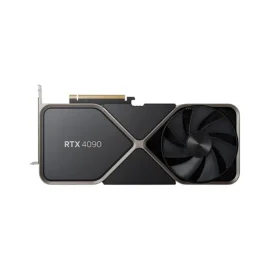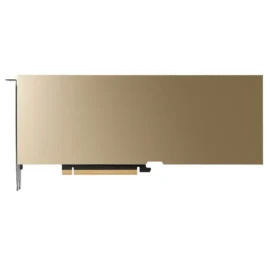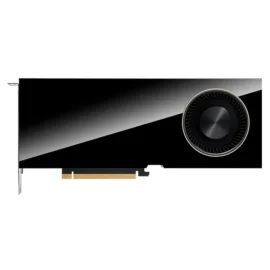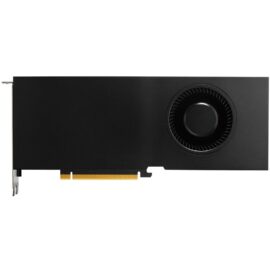The NVIDIA H200 Tensor Core GPU represents the cutting edge in GPU technology, pushing the boundaries of what is possible in artificial intelligence (AI), deep learning, and high-performance computing (HPC). As the successor to the highly successful H100, the H200 comes with several advanced features and upgrades, making it an essential tool for AI researchers, data scientists, and organizations looking to leverage the power of accelerated computing.
In this article, we’ll explore the key aspects of the NVIDIA H200 Tensor Core GPU, its performance capabilities, architecture, and how it compares to its predecessor, the H100. We’ll also look into its use cases in AI, deep learning, and HPC workloads.
Key Specifications of NVIDIA H200
The H200 boasts impressive specifications that make it a top choice for demanding computational tasks:
- Architecture: Hopper
- Tensor Cores: 4th Generation
- CUDA Cores: Over 20,000 cores
- Memory: 120 GB HBM3 memory
- Memory Bandwidth: Over 3 TB/s
- Peak FP16 Performance: Over 2 PFLOPS (petaflops)
- PCIe and NVLink Support: Full support for PCIe Gen 5 and NVLink
These specifications demonstrate that the H200 is designed for AI tasks that require massive computational power and memory bandwidth, such as training large neural networks, natural language processing (NLP), and generative AI models.
Architectural Advancements
The H200 GPU is based on NVIDIA’s Hopper architecture, which was first introduced with the H100. Hopper is specifically designed to accelerate AI and HPC workloads, delivering breakthroughs in performance efficiency.
4th Generation Tensor Cores
The Tensor Cores in the H200 are NVIDIA’s 4th-generation, delivering faster performance in matrix operations, which are critical for deep learning tasks. These Tensor Cores are optimized for mixed-precision computing, allowing the H200 to excel in FP16, TF32, INT8, and other formats essential for AI inference and training.
Transformer Engine
One of the standout features of the H200 is its Transformer Engine, which significantly boosts performance in transformer-based models. Given the prevalence of transformers in modern AI tasks, such as BERT for NLP and GPT models for generative AI, the H200 is tailor-made to handle these complex models efficiently.
Enhanced Memory and Bandwidth
With 120 GB of HBM3 memory and a memory bandwidth exceeding 3 TB/s, the H200 provides the capability to handle larger datasets and models. This is particularly important for tasks like training AI models with billions of parameters, where memory bottlenecks can severely limit performance.
Comparison with NVIDIA H100
The H200 builds upon the foundation laid by the H100, and while the H100 was a massive leap forward, the H200 pushes the envelope even further.
| Feature | NVIDIA H100 | NVIDIA H200 |
|---|---|---|
| Architecture | Hopper | Hopper |
| Tensor Cores | 4th Generation | 4th Generation |
| Memory | 80 GB HBM3 | 120 GB HBM3 |
| Memory Bandwidth | Up to 2 TB/s | Over 3 TB/s |
| Peak FP16 Performance | 1 PFLOPS | 2+ PFLOPS |
| Transformer Engine | Yes | Enhanced |
The main differences are in memory, bandwidth, and performance, with the H200 offering a significant upgrade in all these areas. This makes the H200 a better option for organizations that are working with larger datasets and more complex models, offering more headroom for future growth in AI workloads.
Use Cases of the NVIDIA H200
The NVIDIA H200 Tensor Core GPU is ideal for a variety of AI and HPC applications:
- Deep Learning Training: The H200 excels at training large-scale neural networks, particularly transformer-based models that are popular in NLP and generative AI tasks.
- AI Inference: With its mixed-precision Tensor Cores and enormous memory, the H200 is also perfect for deploying AI models in real-time applications, providing fast inference times even for large models.
- High-Performance Computing (HPC): Beyond AI, the H200 can handle traditional HPC workloads such as simulations, complex mathematical computations, and data-intensive tasks.
- Generative AI Models: As models like GPT-4, DALL·E, and Stable Diffusion become more mainstream, the H200’s Transformer Engine ensures that these models can be trained and fine-tuned faster than ever before.
- Natural Language Processing (NLP): With its memory bandwidth and computational efficiency, the H200 is particularly suited for training large NLP models, enabling faster iterations and better accuracy.
Conclusion
The NVIDIA H200 Tensor Core GPU is a remarkable advancement in the field of AI and deep learning. With its Hopper architecture, enhanced memory capacity, and cutting-edge Tensor Core technology, the H200 is set to power the next generation of AI breakthroughs. Whether you’re training massive neural networks, running AI inference at scale, or tackling complex HPC tasks, the H200 provides the performance and scalability needed to stay ahead in today’s fast-evolving AI landscape.
If you’re looking to future-proof your AI infrastructure, the NVIDIA H200 offers the power and flexibility to handle tomorrow’s AI workloads with ease.






